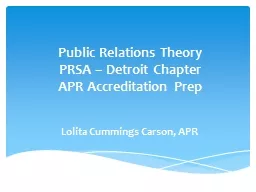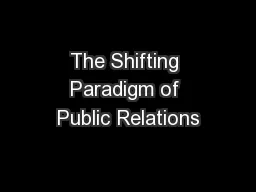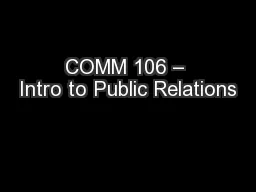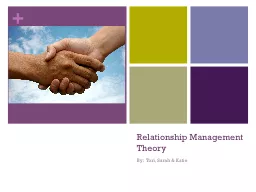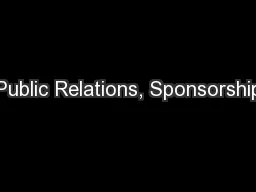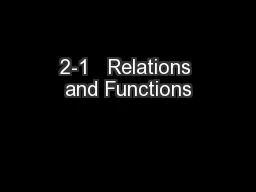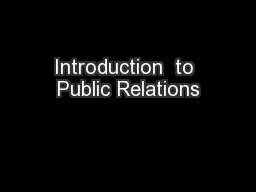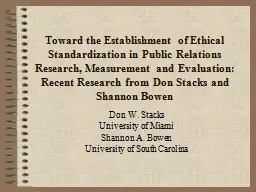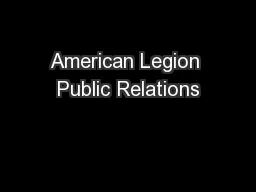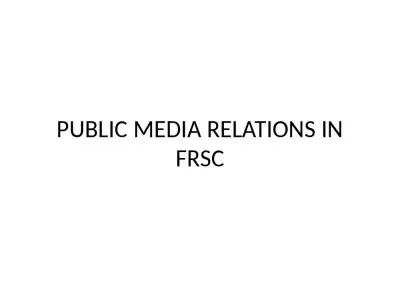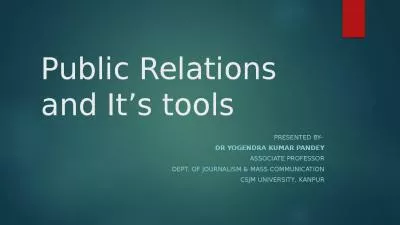PPT-Public Relations Theory
Author : calandra-battersby | Published Date : 2017-11-15
PRSA Detroit Chapter APR Accreditation Prep Lolita Cummings Carson APR Media Public amp Policy Makers each has an agenda Agenda a set of issues that are communicated
Presentation Embed Code
Download Presentation
Download Presentation The PPT/PDF document "Public Relations Theory" is the property of its rightful owner. Permission is granted to download and print the materials on this website for personal, non-commercial use only, and to display it on your personal computer provided you do not modify the materials and that you retain all copyright notices contained in the materials. By downloading content from our website, you accept the terms of this agreement.
Public Relations Theory: Transcript
Download Rules Of Document
"Public Relations Theory"The content belongs to its owner. You may download and print it for personal use, without modification, and keep all copyright notices. By downloading, you agree to these terms.
Related Documents

